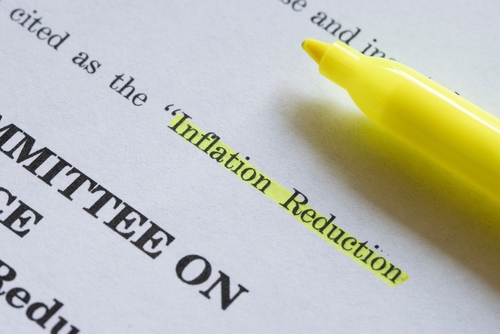Clean energy organizations hail passage of Inflation Reduction Act as environmental, domestic manufacturing and economic win

With President Joe Biden’s signing of the Inflation Reduction Act into law this week, clean energy advocates and industry applauded its provisions and what they will mean for the industry and the domestic economy.
“When taken together with the CHIPS and Science Act and the Infrastructure Investment and Jobs Act, these policies strongly support the technologies needed to accelerate the deployment of new clean energy resources, electric vehicle charging infrastructure, and middle-mile broadband,” Tom Kuhn, president of the Edison Electric Institute (EEI), said in a statement. “They also support the development of the next generation of innovative new technologies that will help electric companies deliver a resilient clean energy future faster. The robust clean energy tax package included in the IRA also will provide significant long-term benefits to electricity customers across America.”
According to the Biden administration, the legislation will support a greener economy through a multi-pronged approach, primarily including lowering energy costs through credits and rebates, advancing clean energy projects, and instituting greater greenhouse gas emissions reductions.
In terms of lowering costs, it offers, among other things:
- $14,000 in direct consumer rebates for household heat pumps or other energy efficient home appliances
- A 30 percent tax credit for rooftop solar panels
- Up to $7,500 in tax credits for new electric vehicles and $4,000 for used electric vehicles
At the same time, it will ramp up the administration’s green economy push with the deployment of 950 million solar panels, 120,000 wind turbines, and 2,3000 grid-scale battery plants by 2030. It also will see the government add protections for nearly 2 million acres of national forests and work with rural electric cooperatives to advance cost-saving clean energy projects. Meanwhile, in terms of greenhouse gas emissions, the legislation emphasizes the need to reduce emissions by approximately 1 gigaton by 2030 and to deploy a mix of clean energy sources while reducing particle pollution from fossil fuels.
“With the stroke of the pen, a clean energy future is now the law of the land,” Heather Zichal, CEO of the American Clean Power Association (ACP), wrote after the legislation’s passage. “This does for climate change and clean energy what the creation of Social Security did for America’s senior citizens. This law will put millions more Americans to work, ensure clean, renewable, and reliable domestic energy is powering every American home, and save American consumers money. For our industry, it’s the starting gun for a period of regulatory certainty which will triple the size of the U.S. clean energy industry and generate over $900 billion in economic activity through the construction of new clean energy projects.”
According to the Solar Energy Industries Association (SEIA), the legislation will also help to push the solar industry from occupying a mere 4 percent of U.S. electricity generation today to as high as 30 percent by 2030.
“Excited to see today’s signing of the #InflationReductionAct – a historic & exciting achievement that facilitates the clean energy transition & enhances grid reliability & resilience! #GridoftheFuture,” Richard Glick, Federal Energy Regulatory Commission chairman, tweeted after passage.
